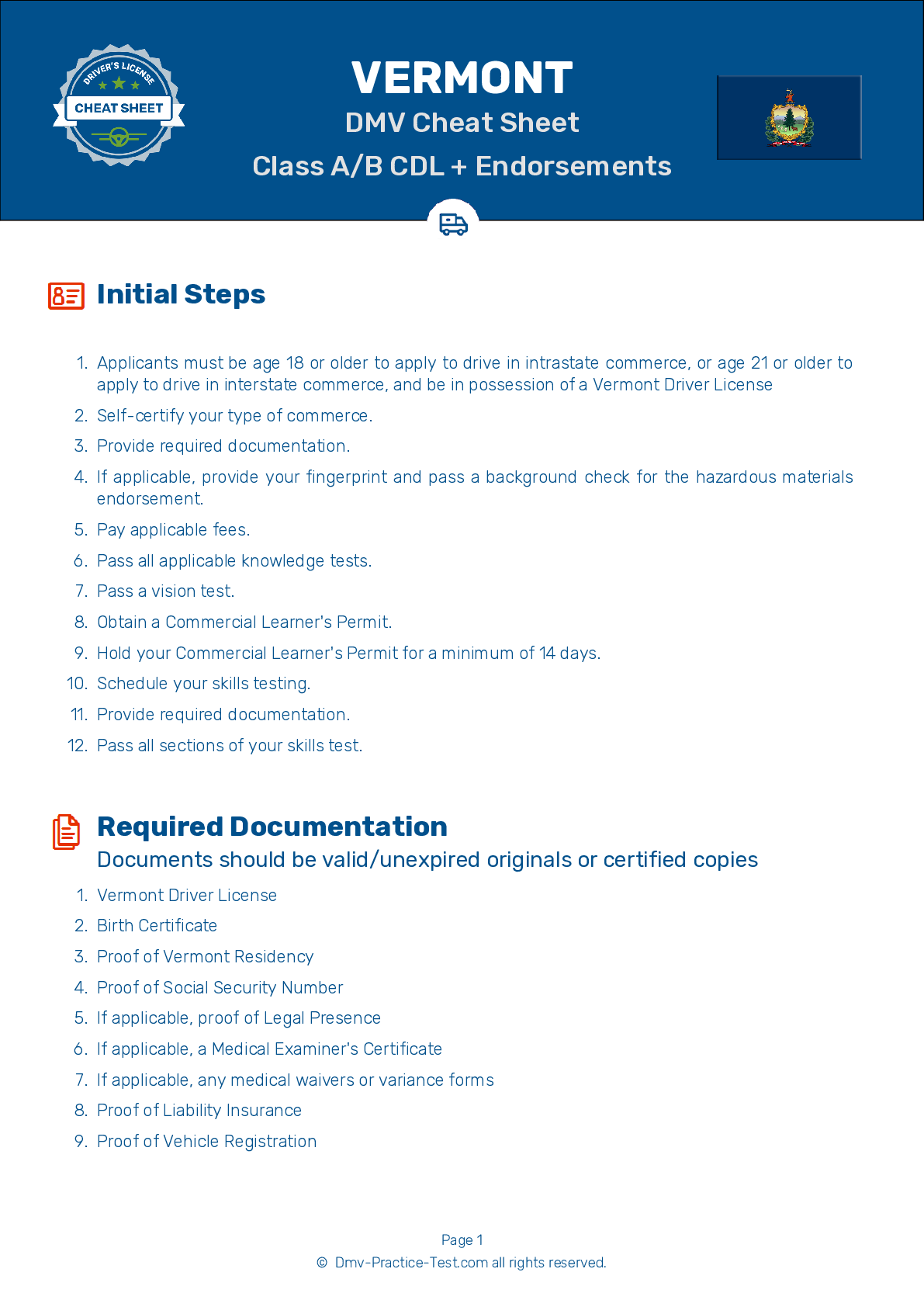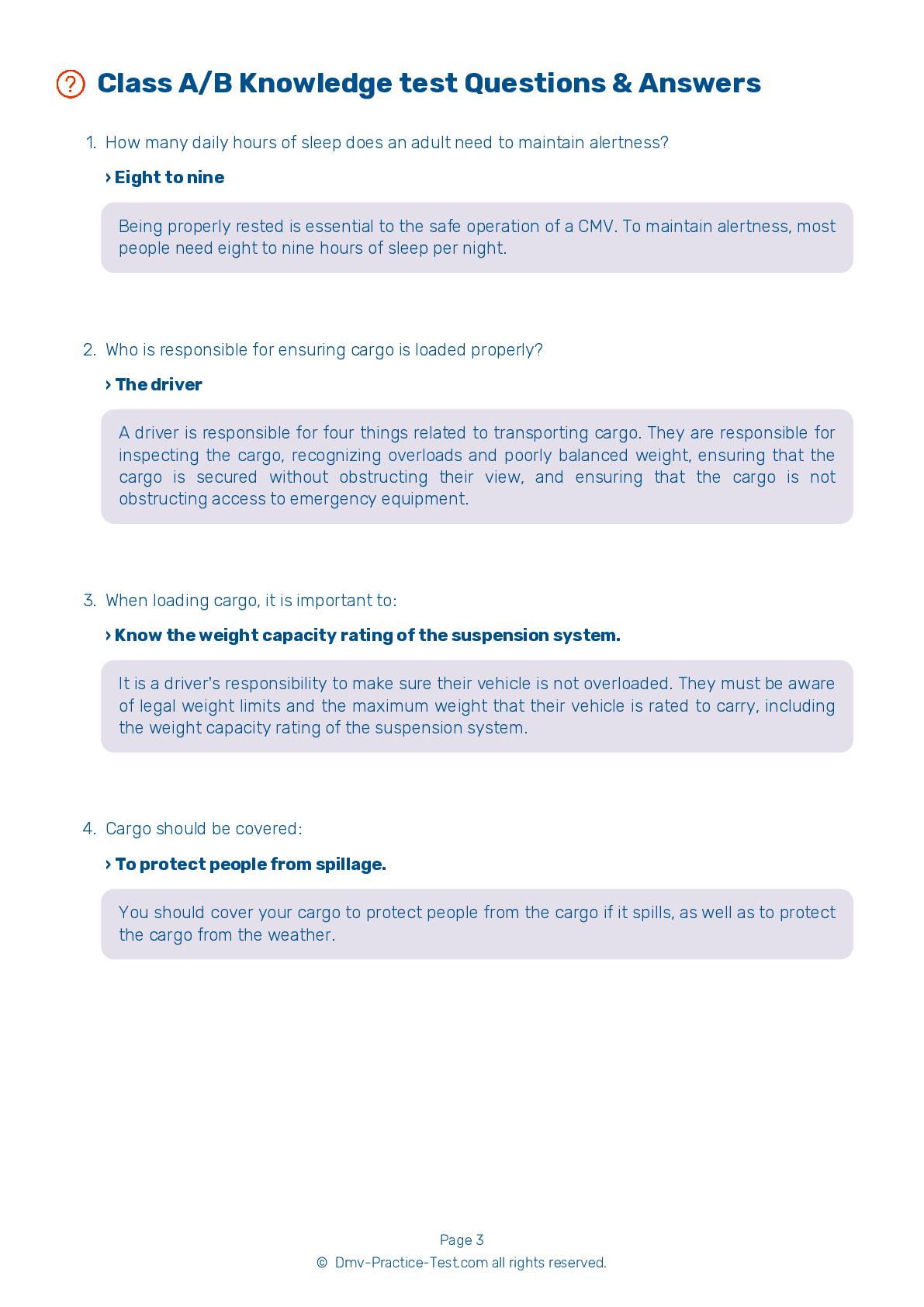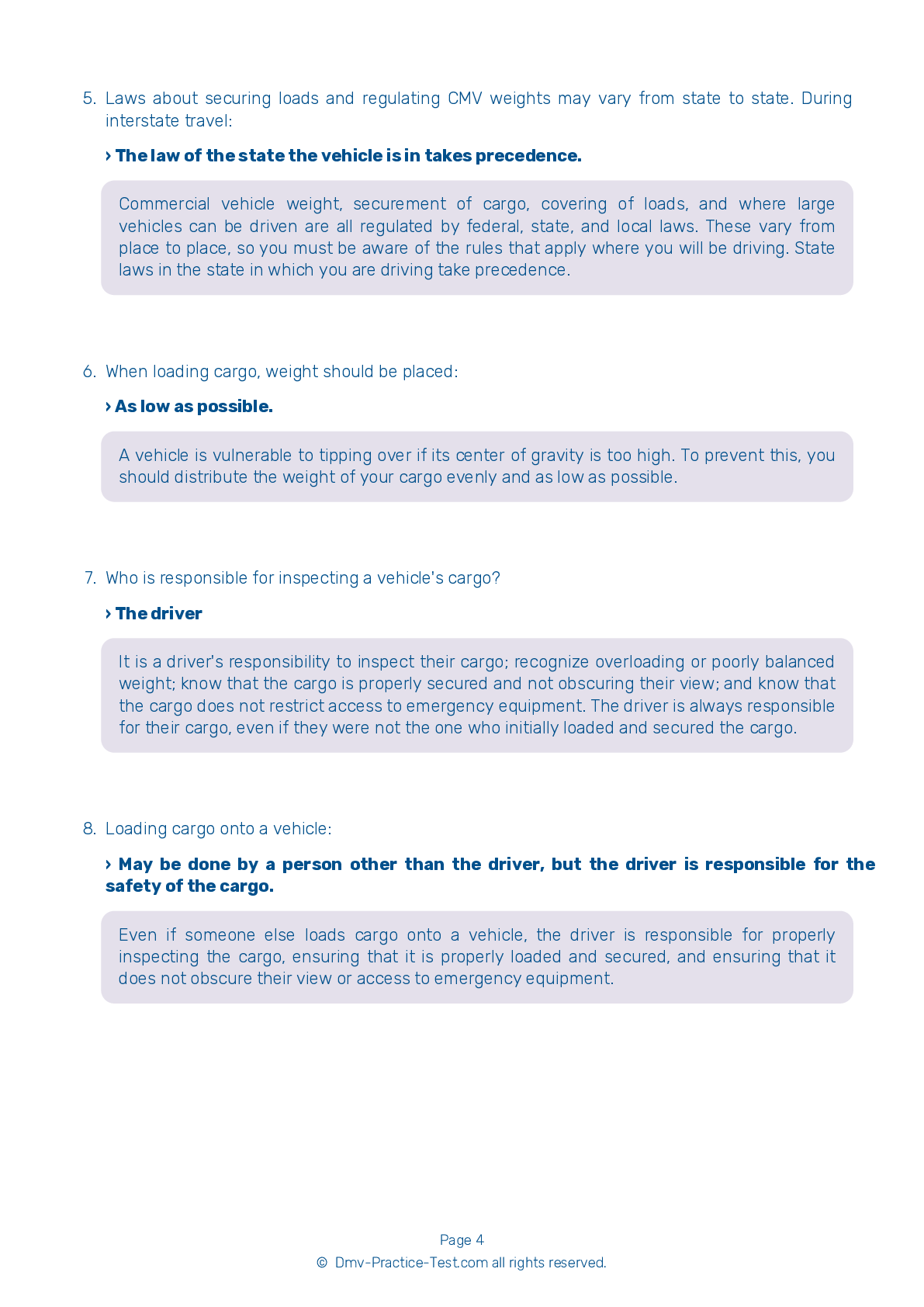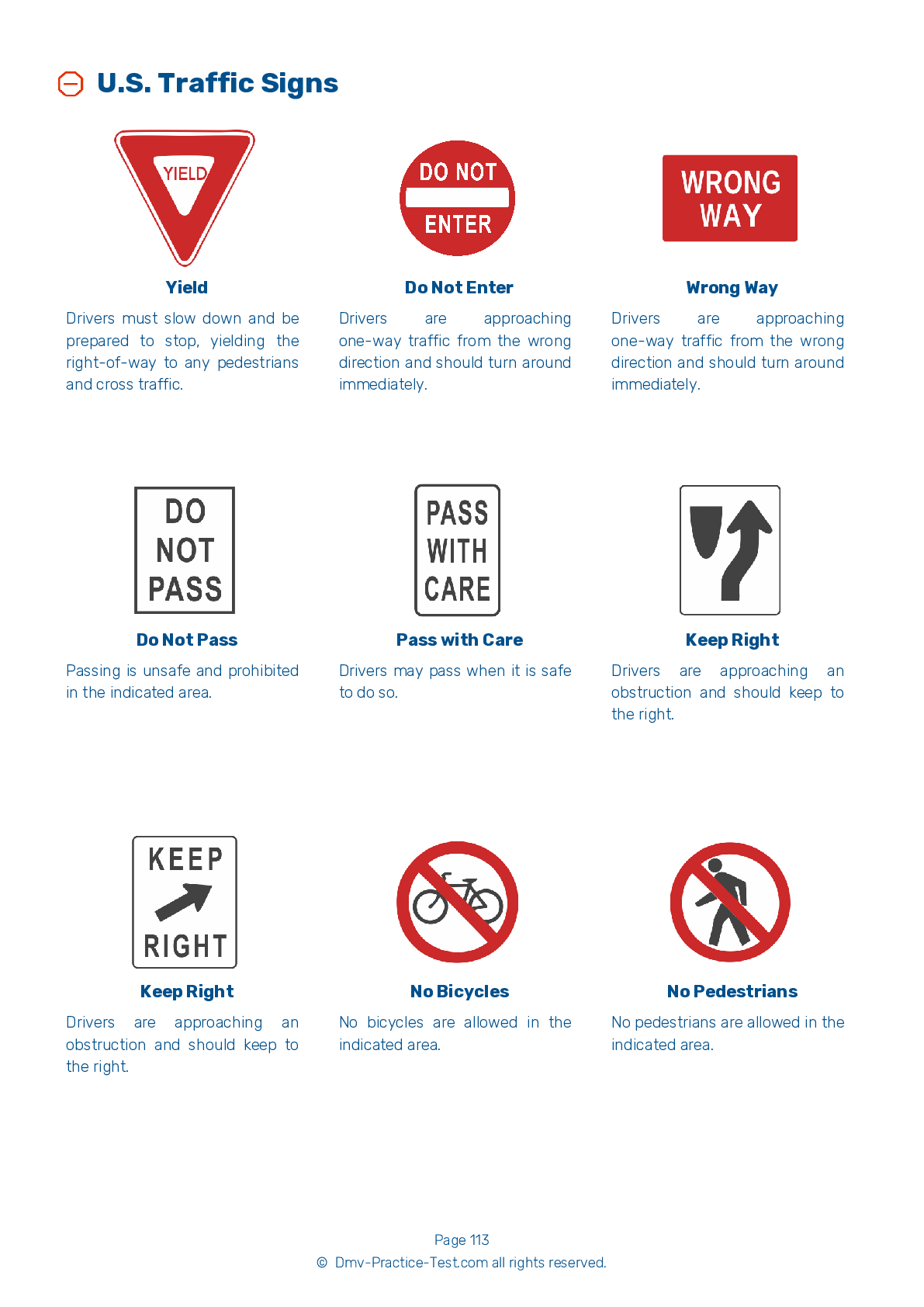Knowledge Test Class A #2
Class A Driving Test | Vermont 2026 #2 Page 7 of 7
Train for FREE online with our Vermont class A license test. The official exam test consists of several obligatory parts, with all of them checking your knowledge of different blocks of road rules. If you need to obtain a VT CDL class A permit in 2026, practice as much as possible. Free sample tests published on our website will help you check and improve your knowledge and boost your grades. Please bear in mind that CDL class A requirements may vary from state to state.
50
40
20
43 . If the coolant temperature gauge goes above the highest safe temperature, you should:
If the coolant temperature gauge goes above the highest safe temperature, you should stop driving as soon as possible and try to figure out what is wrong. There could be an issue in your vehicle that could lead to engine failure and possibly a fire.
44 . If feeling drowsy while driving, you should:
If you begin to feel drowsy while driving, the best thing to do is to stop and get some sleep. A driver trying to push on and finish a trip while fatigued is a major cause of fatal accidents.
45 . When operating a truck requiring a CDL:
A driver's seat should always be equipped with a seat belt. You must wear a seat belt at all times while operating a CMV.
46 . When traveling down a steep downgrade:
On long and/or steep downgrades, you should primarily use engine braking to control the speed of your vehicle. Use your brakes only as a supplement to this effect.
47 . Hanging meat:
An operator should drive with care when transporting a cargo of hanging meat. Such a load is unstable, both because it has a high center of gravity and because the swinging of the meat can affect the driver's handling of the vehicle.
48 . If there is a fire in your vehicle and you are not sure how to extinguish it, you should:
If you are not sure which method to use when putting out a fire, do not attempt to extinguish the fire on your own. Instead, wait for firefighters to arrive and let them handle it. This is especially true if you are experiencing a hazardous materials fire.
49 . ____ is a thin layer of ice that forms on road surfaces.
Black ice is a thin layer of ice that is clear enough for the road surface to be seen through it. A road covered in black ice may look like it is merely wet instead of icy. Always be on the lookout for black ice if a road surface looks wet and temperatures are around the freezing mark.
50 . How long must an applicant hold a Commercial Learner’s Permit (CLP) before taking the road test?
You must have a Commercial Learner's Permit (CLP) for a minimum of 14 days before you can take the CDL skills test. A CLP will be valid for 180 days.
2026 Vermont | Frequently Asked Questions
To secure a CDL Bus endorsement in Vermont, you need to have a valid Commercial Driver's License (CDL). You then need to pass the passenger endorsement knowledge test and the school bus endorsement knowledge test. After passing these tests, you must successfully complete a skills test in the type of school bus you will be driving.
To obtain a CDL Bus license in Vermont, you must have a valid driver's license and pass the CDL general knowledge test. Then, you'll need to get a Commercial Learner's Permit (CLP) and practice on public roads with a qualified CDL holder. After that, pass the CDL skills tests, which include vehicle inspection, basic controls, and road test.
While Vermont doesn't explicitly require specific training for a CDL Bus endorsement, it's highly recommended. Training can help you pass the written knowledge tests and the skills test, which includes pre-trip vehicle inspection, basic vehicle controls, and on-road driving. Experience in driving similar vehicles can also be beneficial.
CDL Bus licenses in Vermont are classified under Class B or Class C. Class B CDL is for single vehicles like city buses. Class C CDL is for vehicles designed to transport 16 or more passengers, including the driver, not covered by Class B. Each class requires passing specific written knowledge tests and skills tests related to the type and size of the vehicle.
No, you cannot use your personal vehicle for the CDL Bus driving test in Vermont. The vehicle used for the test must match the class and type of vehicle you will be driving with your CDL. For a bus endorsement, this means using a commercial bus of the correct capacity and type.
The CDL Bus driving test in Vermont evaluates skills like pre-trip vehicle inspection, basic vehicle control, and on-road driving. You may be asked to perform maneuvers such as backing up, parallel parking, or docking in a designated area. On-road driving evaluates your ability to handle intersections, railway crossings, curves, and various traffic conditions.
Yes, additional medical prerequisites are required for a CDL Bus endorsement in Vermont. Applicants must pass a Department of Transportation (DOT) physical examination every 24 months. This exam assesses general physical health, vision, hearing, and the potential presence of other conditions that could affect driving ability, such as diabetes or high blood pressure.
No, it's not permissible to transport passengers without a valid CDL Bus endorsement in Vermont. The endorsement is required for drivers who wish to operate a vehicle designed to carry 16 or more passengers, including the driver. Driving without the proper endorsement can result in legal penalties, including fines and suspension of your CDL license.
The CDL Bus endorsement can be added to your existing CDL license in Vermont. You don't need to apply for a new license altogether. However, you will need to pass the Passenger Endorsement Knowledge Test and a skills test in the vehicle type you wish to be endorsed for. Ensure to have your current CDL when you apply for the endorsement.
Yes, there are restrictions for drivers with a CDL Bus endorsement in Vermont. Drivers must comply with federal hours of service regulations, which limit driving hours to prevent fatigue. Also, drivers must pass a physical exam every two years and are subject to random drug and alcohol testing. Additionally, any traffic violations or accidents can result in the suspension or revocation of the endorsement.



